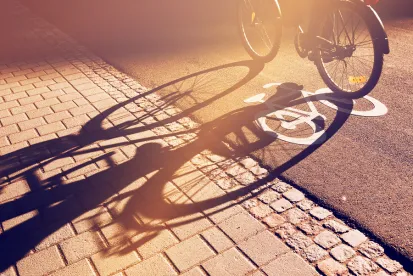Back in November 2017 we discussed the “last mile” issue facing cities and urban planners around the globe. At that time we noted that “… transit options often fail at providing a solution of getting people to their final destination with relative ease.” We noted the benefit of Vehicle-to-Vehicle and Vehicle-to-Infrastructure communication systems as a way to better coordinate transit infrastructure systems. But, even those options won’t solve all the ailments of urban transportation. Realizing this, many transit authorities and mobility companies are looking towards bike sharing as a new tool in the fight against urban congestion.
In recent weeks Uber has joined this bike-sharing cohort with their acquisition of JumpBike of San Francisco. JumpBike is a pioneer in the electric-assist dockless bike sharing systems looking to capitalize on the increasing use of bicycles as transit alternatives in urban settings. Uber has also been seeing bike-sharing systems as a threat to their own business model with JumpBike seeing the average per-ride distance in hilly San Francisco reaching 2.6 miles in recent weeks, about the same average distance as Uber rides in San Francisco.
Similarly, in 2016 Ford became the backer behind San Francisco’s massive bike sharing system. The San Francisco system baked by Ford has increased from 700 bikes in 2016 to over 7,000 bikes in 2018. As a part of this transit push, Ford also incorporated the San Francisco bike sharing system into the Ford “Pass App” where a user can find available transportation or mobility options in the surrounding area whenever they need them.
The push by ride sharing companies and automotive manufacturers into alternative business models and transportation systems isn’t a mistake or shoot for the moon ambition, but being born out of necessity. Urban transit itself is increasingly shifting towards a multimodal transit system, reliant upon the personal cars, public transit, ride shares, bike share, and eventually next-generation technologies all working in conjunction rather than absolute competition. Urban planners and city officials are looking to engage these systems for end-to-end integration allowing for seamless transit infrastructure, rather than systems stacked on top of each other in a haphazard fashion. This trend has been seen first-hand through consumer buying patterns as well, with the average consumer shifting away from a reliance on personal car ownership as more cost effective and reliable alternatives present themselves. But, this shift won’t be easy for cities that often rely heavily on parking and ticketing as an important revenue source to supplement declining tax revenues.
In 2016, a study in Governing magazine found that the top 25 cities in the United States collected over $5 billion in parking and ticketing related revenue sources, or about $129 per capita. Although this may be negligible for some cities, larger cities like New York City, Los Angeles, and Chicago will see a much larger impact on their revenue sources with New York alone collecting $1.2 billion in parking and ticketing related revenue in 2016. As cities manage the diverging interests between alleviating congestion and finding tax revenue from alternate sources, bike sharing, ride sharing, autonomous vehicles and other next generation transportation systems will be a force they will have to learn to reckon with.



 />i
/>i

